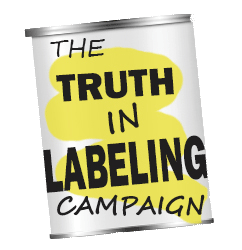When you hear that the FDA considers monosodium glutamate GRAS – or, generally recognized as safe – what does that mean? It’s certainly one of the “selling points” that industry likes to toss around a lot as evidence that monosodium glutamate is harmless.
But that GRAS designation is inherently deceiving.
Sixty-two years ago, following passage of the Food Additives Amendment of 1958, the FDA grandfathered monosodium glutamate into a category of additives called GRAS. There was no testing done or even reviewed by the FDA to determine if monosodium glutamate was indeed safe. The GRAS classification was solely based on monosodium glutamate having been in use without objection prior to 1958. The actual safety of pre-1958 monosodium glutamate was not then, and never has been, established.
But to make using a GRAS label for monosodium glutamate even more farfetched, is the fact that the monosodium glutamate in use in the U.S. today is not even the same as the monosodium glutamate that was grandfathered as GRAS in 1958. From 1920 until 1956, the process underlying production of glutamic acid and monosodium glutamate in Japan had been one of extraction, a slow and costly method (1). Then, around 1956, Ajinomoto Co., Inc. succeeded in producing glutamic acid and monosodium glutamate using genetically modified bacteria to secrete the glutamic acid used in monosodium glutamate through their cell walls, and cost saving, large-scale production of glutamic acid and monosodium glutamate through fermentation began (2,3).
Approximately ten years later, the first published report of an adverse reaction to monosodium glutamate appeared in the New England Journal of Medicine (4), and a study demonstrating that monosodium glutamate was excitotoxic, causing brain damage, endocrine disorders and behavior disorders, was published in the journal Science in 1969 (5). Of interest to note is the fact that by the time ten years had gone by, grocery shelves were overflowing with processed foods loaded with monosodium glutamate, hydrolyzed protein products, autolyzed yeasts and lots of other ingredients that contained the same toxic free glutamic acid found in monosodium glutamate.
If you have questions or comments, we’d love to hear from you. If you have hints for others on how to avoid exposure to MfG, send them along, too, and we’ll put them up on Facebook. Or you can reach us at questionsaboutmsg@gmail.com and follow us on Twitter @truthlabeling.
REFERENCES
- Van Nostrand’s Scientific Encyclopedia. 6th ed. New York: Van Nostrand Reinhold, 1983:1211-2.
- Kirk-Othmer Encyclopedia of Chemical Technology. 3rd ed. Vol 2. New York: Wiley, 1978:410-21.
- Kirk-Othmer Encyclopedia of Chemical Technology. 4th ed. New York: Wiley, 1992:571-9.
- Kwok RHM. The Chinese restaurant syndrome. Letter to the editor. N Engl J Med. 1968;278(14):796.
- Olney JW. Brain lesions, obesity, and other disturbances in mice treated with monosodium glutamate. Science. 1969;164:719-721.


